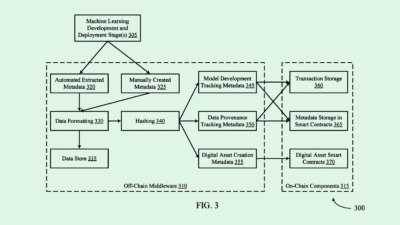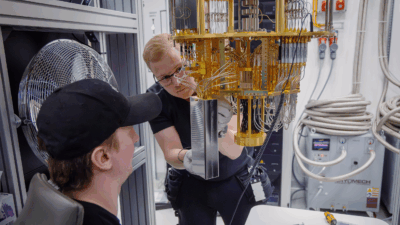Don’t Wait Until Your Enterprise is “Perfect” To Start Adopting AI
You may get left behind if you delay adoption of AI until its problems are solved, said ServiceNow’s Paul Smith.

Sign up to get cutting-edge insights and deep dives into innovation and technology trends impacting CIOs and IT leaders.
As AI develops, it’s leaving enterprises with more questions than ever. That shouldn’t stop you from jumping in – even if you start small.
Many IT leaders are asking themselves when to implement AI, how to do it, and whether or not it’s worth it to go all-in on the tech. While there’s no question that AI can benefit these organizations in some way, shape or form, getting real value from this tech hinges on knowing where best to apply it – and not waiting until it’s perfect to do so, said Paul Smith, president of global customer and field operations at ServiceNow, a cloud-based software platform that helps businesses automate and operate.
“Just don’t hesitate. The number one piece of advice I have is to just make a start,” Smith said.
CIO Upside sat down with Smith to discuss the rapid development of AI, the movement towards agents, and the importance of making this tech easily accessible to enterprises of all shapes and sizes. This interview has been edited and condensed for clarity.
Broadly, what do you think enterprises are getting right – or getting wrong – in their AI strategies?
The organizations that I think are doing well are the ones that are honing in on very specific tasks, and are taking action on those specific tasks by putting agents to work and automating – just taking these individual pieces and making them better.
I’ll give you one example: Internally within ServiceNow, we have a finance Help Desk. That help desk used to have a four-day (turnaround), in terms of you go in with your query, you then get your answer. We put ServiceNow [AI] agents to work on that help desk, and the average resolution time is now something like 98 seconds.
The employee benefits there, there’s time saved, there’s the morale boost from getting answers so quickly. And it’s not that we’ve then eliminated a bunch of roles as a result of that, but we’ve been able to take those roles and put them to work solving many other growth challenges that we have as a business. I see the companies that are doing really, really well are the ones that don’t try and boil the entire ocean, but take a very specific task and go, “You know what? I can do that better using AI.”
Let’s talk about AI’s biggest buzzword at the moment: Agentic. Why has this emerged as such a massive trend?
With agentic AI, we are now moving from using technology to partnering (with) it. We have a whole new digital workforce ready to work 24/7, execute and autonomously solve complex workflow problems.
There’s been an awful lot of groundwork that has been covered to get up to this point. We have been putting automation to work for 20 years. We spent the last 20 years at ServiceNow connecting the modern enterprise together, providing a single pane of glass across all of your systems of record. And now, with the pace of innovation, 12 months ago, we were all focused on the launch of generative AI. I think it’s just the right intersection of all of that foundational work that we’ve done with the very swift advances that we’ve seen in (large language models) … It’s come together and exploded into agentic. We were already doing this, but now everyone’s honed in on the badge as it were, and now it’s got a name, and that name has proliferated.
I want to discuss how ServiceNow approaches agentic, including pre-built agents, the low-code/no-code AI Agent studio and the Agent Orchestrator. What’s the vision behind that?
There are trillions of workflows running monthly across the ServiceNow platform globally, and that gives us the unique perspective in terms of those automations that people do time and time again, which lend themselves perfectly to an agentic AI approach. So we’re releasing thousands of ServiceNow agents to go and tackle those, and organizations will adopt those. At the same time, we have our partner community, who are going to be creating agents that solve the same problems that they see time and time again.
There are going to be agents that are created by the partners running on the platform. There are going to be agents that are created by the customer themselves running on the platform. And then there are third-party agents running from other platforms as well. So this big heterogeneous mix of agents are all being put to work.
That’s why we’re also focused on our AI Agent Orchestrator: How do you orchestrate and control this very heterogeneous mix of agents that you’re going to have out in your enterprise? You need to be able to see where they’re working and their results, and also absolutely need to be able to see what data they have access to and what permissions they have. You need that rich level of control.
Do you have any advice for enterprises that are looking to deploy agentic AI?
We’ve got our own research that shows the average enterprise has over 360 different legacy systems. Most enterprises will admit that their data quality is not yet at the point at which you can run AI seamlessly across it.
It’s easy to hesitate and say, ‘I’m going to make my data perfect, I’m going to integrate all of these applications together, and then I’m going to be ready to roll AI across the enterprise. My personal belief is big, complex corporations will always have integration challenges. And if you wait until it’s perfect, you will get left behind.
A lot of enterprises are currently struggling with ROI on AI. How can enterprises get the most value out of their AI investments?
I actually, genuinely think there is value already today. We’re not waiting for some Nirvana future, but I think it is about the ability to measure the very, very specific impact of these individual projects and add them all up.
One (example) in terms of how I train my sales organization and reduce their ramp time: Typically, it takes them nine months to be effective. I can now get them effective in five to six months because they’re using generative AI. And I can put a precise number in terms of the revenue impact of a go-to-market sales professional being fully ramped in six months instead of nine months.
I also think the organizations that are doing this the very best, are the ones that are intelligently using AI to redeploy resources to dramatic effects … it’s almost a rebalancing of the workforce. Still with humans very much at the heart of it, but reducing the amount of their mundane task-based work and increasing the high-value, high-productivity work.
The AI market has shifted massively in the past two years. How has ServiceNow’s approach to enterprise AI changed in recent years?
The number one thing we’re focused on now in terms of how we talk about this is really trying to distill the story down as simply as possible. We’re in a mode now, this is real. Companies need to adopt this fast, and we need to make it easy for customers to adopt this fast.
In that regard, we’ve got a focus on three simple things. First one is pricing and packaging. We’ve created pretty simple starter packs that allow people not to necessarily need to do an enterprise-wide transformation, but rather take AI and put agents to work in a specific part of their business.
Second is bringing all of our partners on the journey as well. We’re embedding many members of our partner ecosystem directly alongside our product group. The innovation cycle on this stuff is so fast, they know exactly what’s on our product roadmap. Third is that we’re creating lots of customer success hubs around the world with a focus on these early AI use cases to give all of our customers accelerated support to get to value fast.
How do you expect the AI landscape to change in the next year? Or the next five years?
I expect it to change very quickly. That’s the one truth I can give you. We’re increasing our release cycle, we’re increasing the number of interim releases that we do, and that is just because the pace of change that we see, both in terms of compute and what that enables, is profound. The number one thing we are focused on is making ServiceNow a platform that can adopt and adapt to all of this change quickly.
Everyone needs to be prepared for the clock speed of this change to be dramatically different than anything we’d ever experienced. The market is going to change profoundly and go off in many, many different directions. But I think the one thing that every organization on the planet needs to be able to do is to adapt to this stuff with speed.











